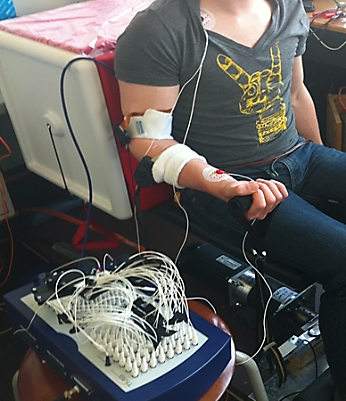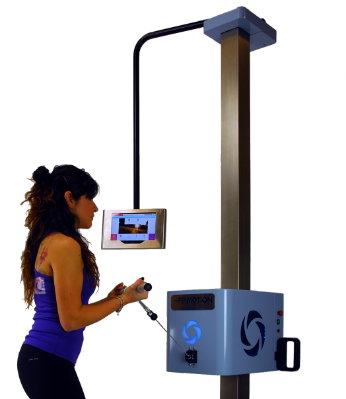
The neuromuscular system is generally intended as the combination of nervous system and muscles, working together to enable movement. In this context, the BM/d Lab focuses on involuntary neuromuscular mechanisms to improve the efficiency of muscle training and rehabilitation programs. Vibrating loads are applied to the muscle and the underlying neuromuscular adaptation processes studied with the aim of optimizing the imposed loads. Characterization of the neuromuscular system is carried out through extensive use of electromyography (EMG), i.e., the analysis of muscle biopotentials.
Advanced algorithms for the extraction of EMG features that carry relevant physiological information on the neuromuscular activity. Transcutaneous electrical neural stimulation (TENS) is also employed to assess the impact of high-frequency mechanical stimulation on Hoffmann’s reflex (known as H-reflex). Dedicated setups and high-end equipment from the startup HiPerMotion are available for controlled application of vibrating loads.

EMG analysis is also extended to other relevant muscles and applications, such as the analysis of diaphragm EMG for respiratory monitoring either during sleep or under ventilation.
Neuromuscular research is carried out in collaboration with the a number of strategic clinical partners, comprising the Máxima Medical Center in Veldhoven, the Kempenhaeghe Epilepsy Center in Heeze, La Sapienza University of Rome, and the Aspire Academy (Quatar).